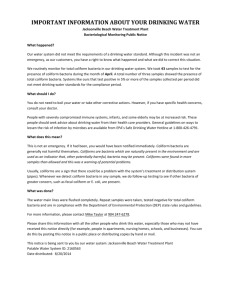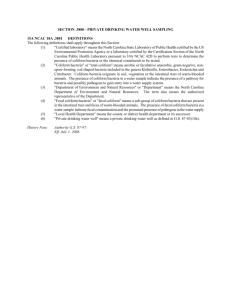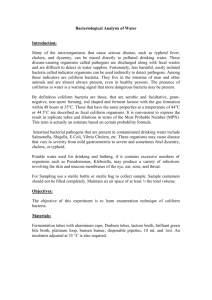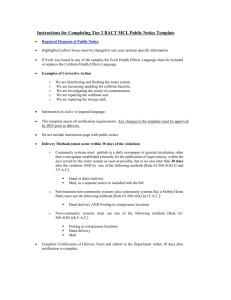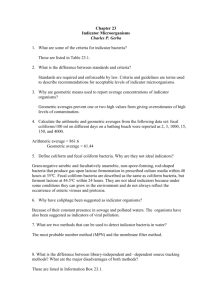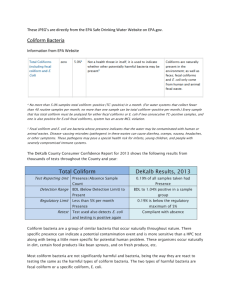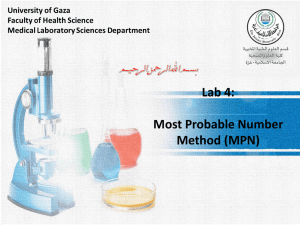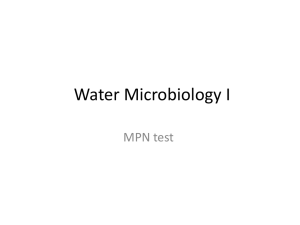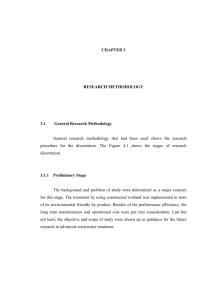CE 170: Water Quality and Supply Engineering
advertisement
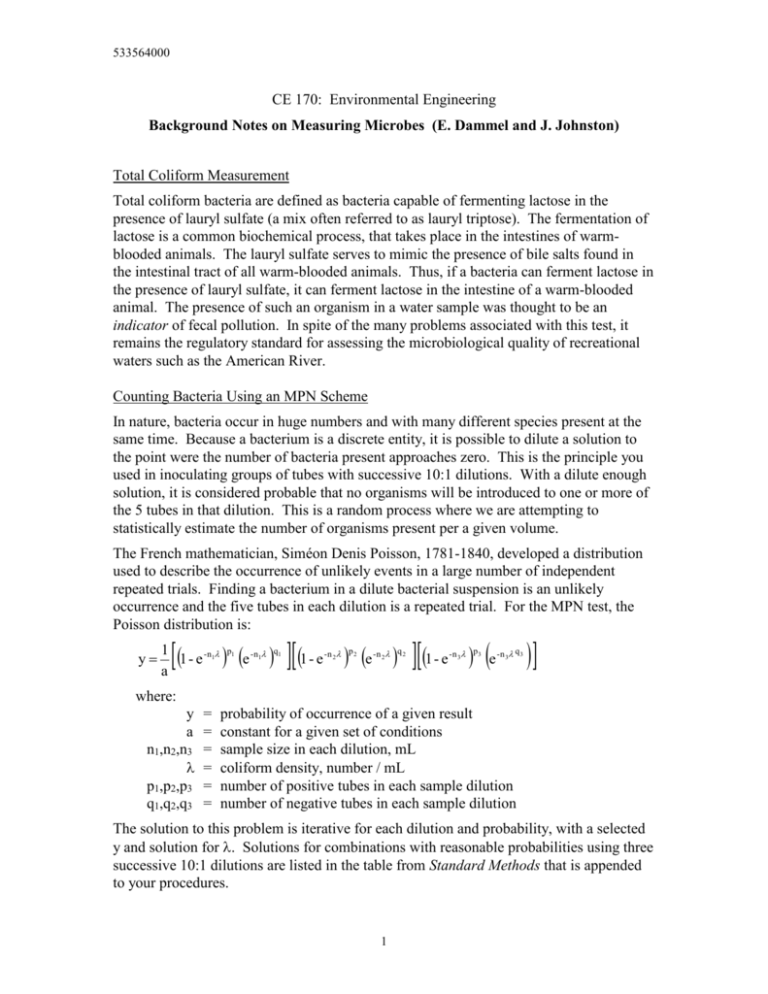
533564000 CE 170: Environmental Engineering Background Notes on Measuring Microbes (E. Dammel and J. Johnston) Total Coliform Measurement Total coliform bacteria are defined as bacteria capable of fermenting lactose in the presence of lauryl sulfate (a mix often referred to as lauryl triptose). The fermentation of lactose is a common biochemical process, that takes place in the intestines of warmblooded animals. The lauryl sulfate serves to mimic the presence of bile salts found in the intestinal tract of all warm-blooded animals. Thus, if a bacteria can ferment lactose in the presence of lauryl sulfate, it can ferment lactose in the intestine of a warm-blooded animal. The presence of such an organism in a water sample was thought to be an indicator of fecal pollution. In spite of the many problems associated with this test, it remains the regulatory standard for assessing the microbiological quality of recreational waters such as the American River. Counting Bacteria Using an MPN Scheme In nature, bacteria occur in huge numbers and with many different species present at the same time. Because a bacterium is a discrete entity, it is possible to dilute a solution to the point were the number of bacteria present approaches zero. This is the principle you used in inoculating groups of tubes with successive 10:1 dilutions. With a dilute enough solution, it is considered probable that no organisms will be introduced to one or more of the 5 tubes in that dilution. This is a random process where we are attempting to statistically estimate the number of organisms present per a given volume. The French mathematician, Siméon Denis Poisson, 1781-1840, developed a distribution used to describe the occurrence of unlikely events in a large number of independent repeated trials. Finding a bacterium in a dilute bacterial suspension is an unlikely occurrence and the five tubes in each dilution is a repeated trial. For the MPN test, the Poisson distribution is: y 1 1 - e -n1 a e 1 - e e p1 - n1 q1 -n 2 p 2 -n 2 q 2 1 - e - n 3 p 3 e - n 3 q 3 where: y a n1,n2,n3 p1,p2,p3 q1,q2,q3 = = = = = = probability of occurrence of a given result constant for a given set of conditions sample size in each dilution, mL coliform density, number / mL number of positive tubes in each sample dilution number of negative tubes in each sample dilution The solution to this problem is iterative for each dilution and probability, with a selected y and solution for . Solutions for combinations with reasonable probabilities using three successive 10:1 dilutions are listed in the table from Standard Methods that is appended to your procedures. 1 533564000 Diluting Samples The standard MPN test involves using three successive 10:1 dilutions. This procedure can count up to 1600 coliform per 100 mL. If the sample has more than this, we need to dilute it until we get it into the test range. Domestic sewage, for instance, contains millions of coliform per 100 mL. Unfortunately, we don't know the coliform count before doing the test. So, like in the BOD test, we may have to prepare a series of dilutions and look for valid test results. The Presumptive Coliform Test Determining the nummber of bacteria isn't always the goal in engineering practice. For drinking water regulation, we often want to simply detect the presence of bacteria. In domestic water supply, if you get a positive result, you presume that coliform are present and take appropriate actions to protect public health. Simultaneously, you take steps to determine if the positive test result is really caused by coliform bacteria, including the start of a confirmed test. The confirmed test is only the first of several sequential steps needed to determine if the lactose-fermenting bacteria found in the presumptive test belong to the coliform group. The Heterotrophic Plate Count (HPC) Test Another measure of the microbial content of a water sample is the Heterotrophic Plate Count (HPC) test. In this test, a sample of water is mixed with warm R2A agar (a nutrient substrate) that is solidifying in a petri dish. After the agar completely solidifies, the petri dish is incubated for 48 hours. Then the colonies that grew in the agar are counted. The assumption here is that one bacterium results in one colony. This test differs from the MPN test in two ways. First, it is a direct count, rather than a probabilistic estimate. Second, it is a less selective test. In other words, the R2A agar can be used by many (if not most) heterotrophic bacteria. Therefore, HPC's should always be higher than MPN's because a wider variety of bacteria are detected in the HPC test than the MPN test. 2
